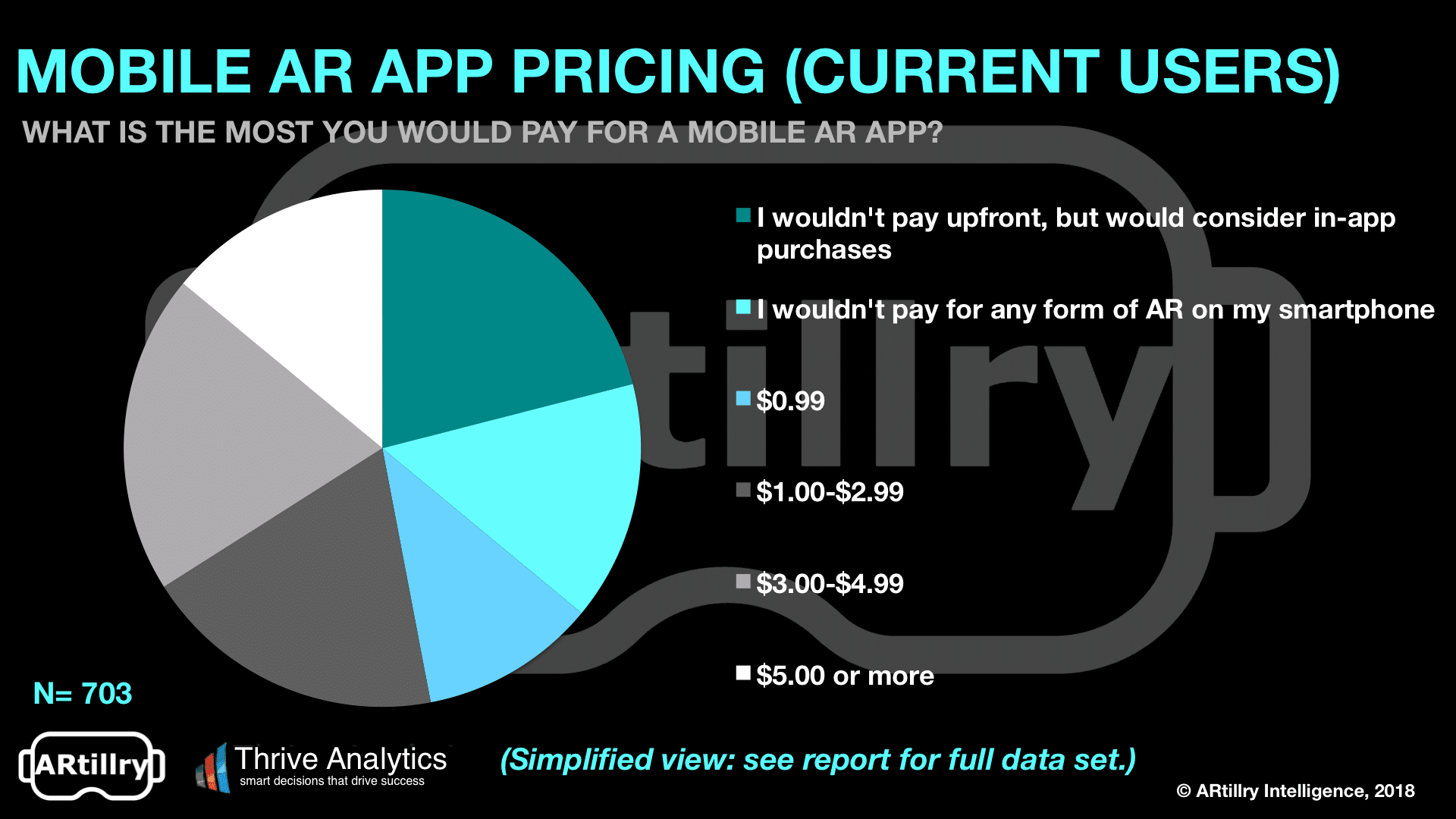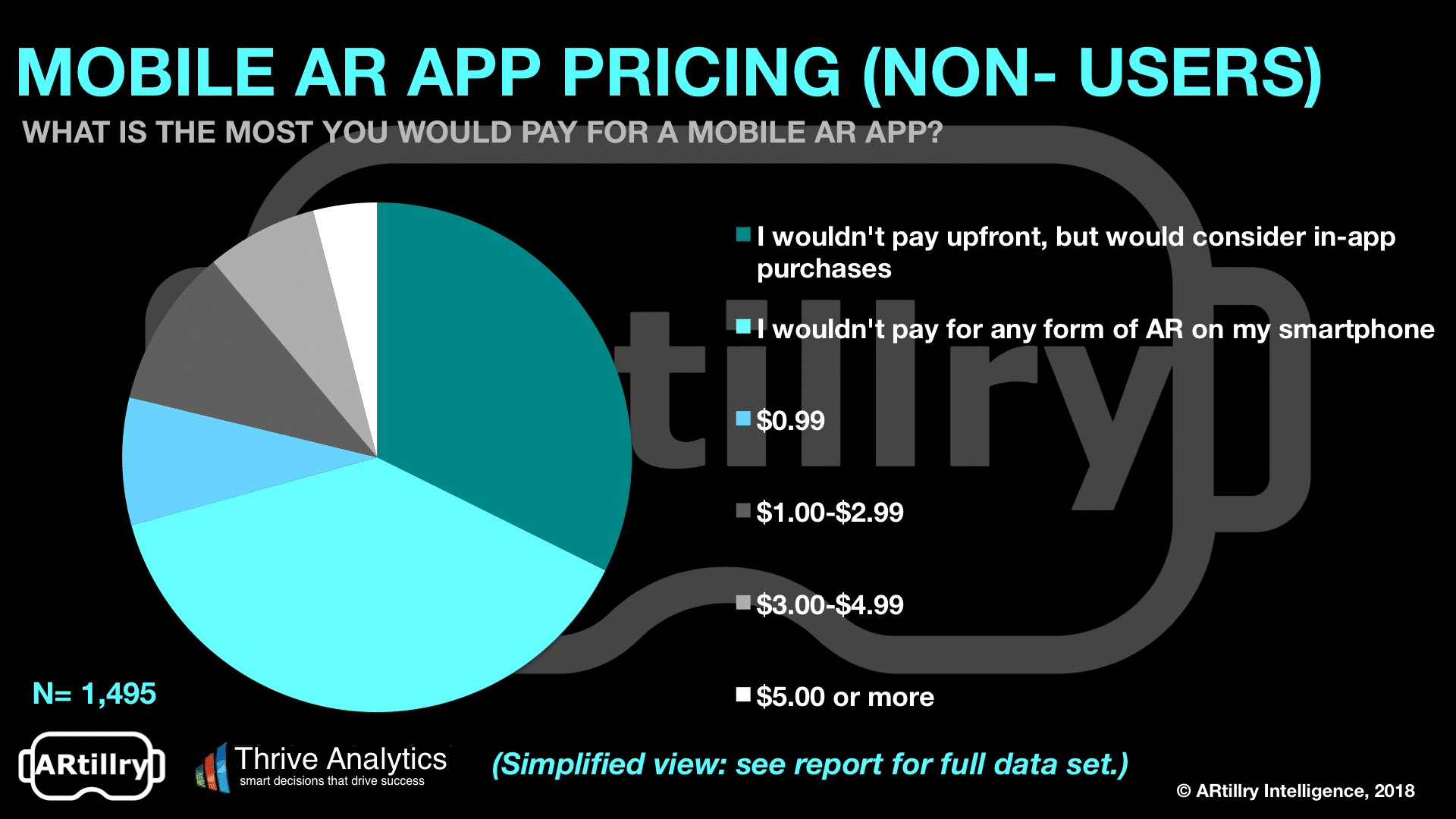
“Behind the Numbers” is ARtillry’s series that examines strategic takeaways from its original data. Each post drills down on one topic or chart. Subscribe for access to the full library and other knowledge-building resources.
Among demand signals and behavioral patterns that characterize how consumers are adopting mobile AR, price sensitivity is a big one. And just like many of the other areas we’ve explored recently such as AR satisfaction, there’s a delineation between current users and non-users.
Starting with users, 64 percent will pay $.99 or more for AR apps, and 14 percent will pay more than $5. This is a strong demand signal, considering greater price sensitivity in the broader mobile app universe. We attribute this higher willingness to pay to mobile AR’s high satisfaction rates.
It’s also important to acknowledge in-app purchases. 21 percent of respondents reported that they won’t pay upfront for mobile AR apps but they will pay for items in apps or games. We can surmise that some portion of the groups willing to pay upfront are also open to in-app purchases.

Meanwhile, non-users sing a different tune when it comes to price sensitivity. Only 29 percent of those respondents will pay 1$ or more for mobile AR apps. More worrisome is that the greatest share of responses (38 percent) is unwilling to pay any amount of money for mobile AR.
However, one positive signal from non-users is that 32 percent would consider in-app purchases after having downloaded a free AR app. Along with the current-user responses, this indicates that in-app purchases should be considered to address the largest range of users and affinity groups.
In fact, in-app purchases can be advantageous for several reasons. Average revenue per user is often greater than upfront app purchases, due to the behavioral economics of micro transactions. It depends on the app (gaming often drives in-app purchases) but it should always be considered.

These survey data can inform mobile AR strategies and business models, which of course include pricing. Aim too high, and it can have an elastic effect on demand. Aim too low, and it can leave money on the table. In-app purchases enable yield-optimization through variable pricing.
Similarly, it’s advisable to build apps that have stickiness or replayability. This brings a new flavor to a longstanding mobile app strategy: optimize for high frequency and active use, as opposed to high download figures. This also correlates to in-app purchases, which monetize active use.
This is one of many historical lessons that will apply to AR. But it’s also early, so constant examination is required. User behavior and standards will evolve, just like they did with early smartphone apps. Those who develop mobile AR accordingly will see the most success.
These data were pulled from the ARtillry Intelligence Briefing: Mobile AR Usage & Consumer Attitudes, produced in partnership with Thrive Analytics. Preview more of the report here or subscribe to access the entire library.
For a deeper dive on AR & VR insights, see ARtillry’s new intelligence subscription, and sign up for the free ARtillry Weekly newsletter.
Disclosure: ARtillry has no financial stake in the companies mentioned in this post, nor received payment for its production. Disclosure and ethics policy can be seen here.
